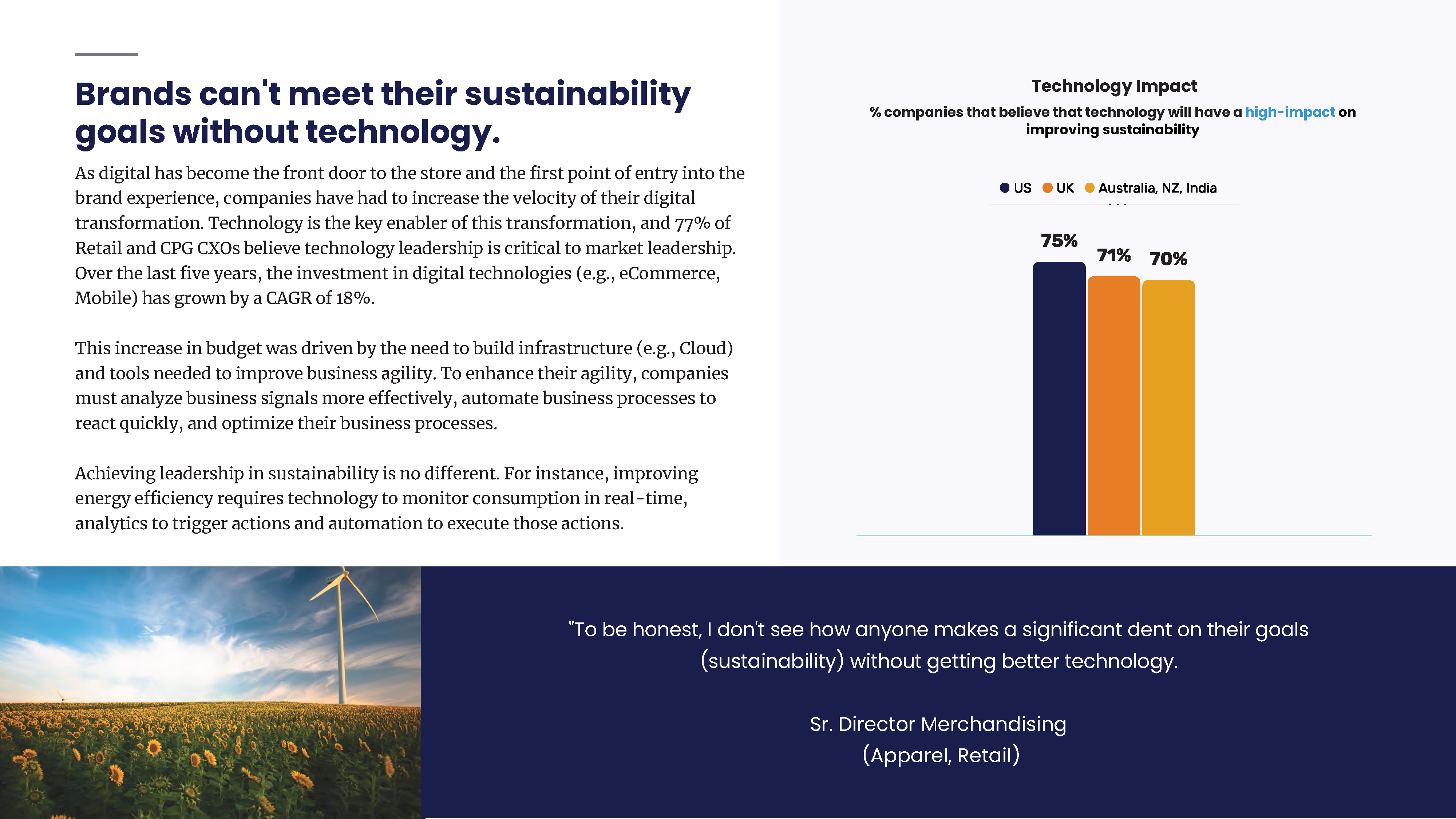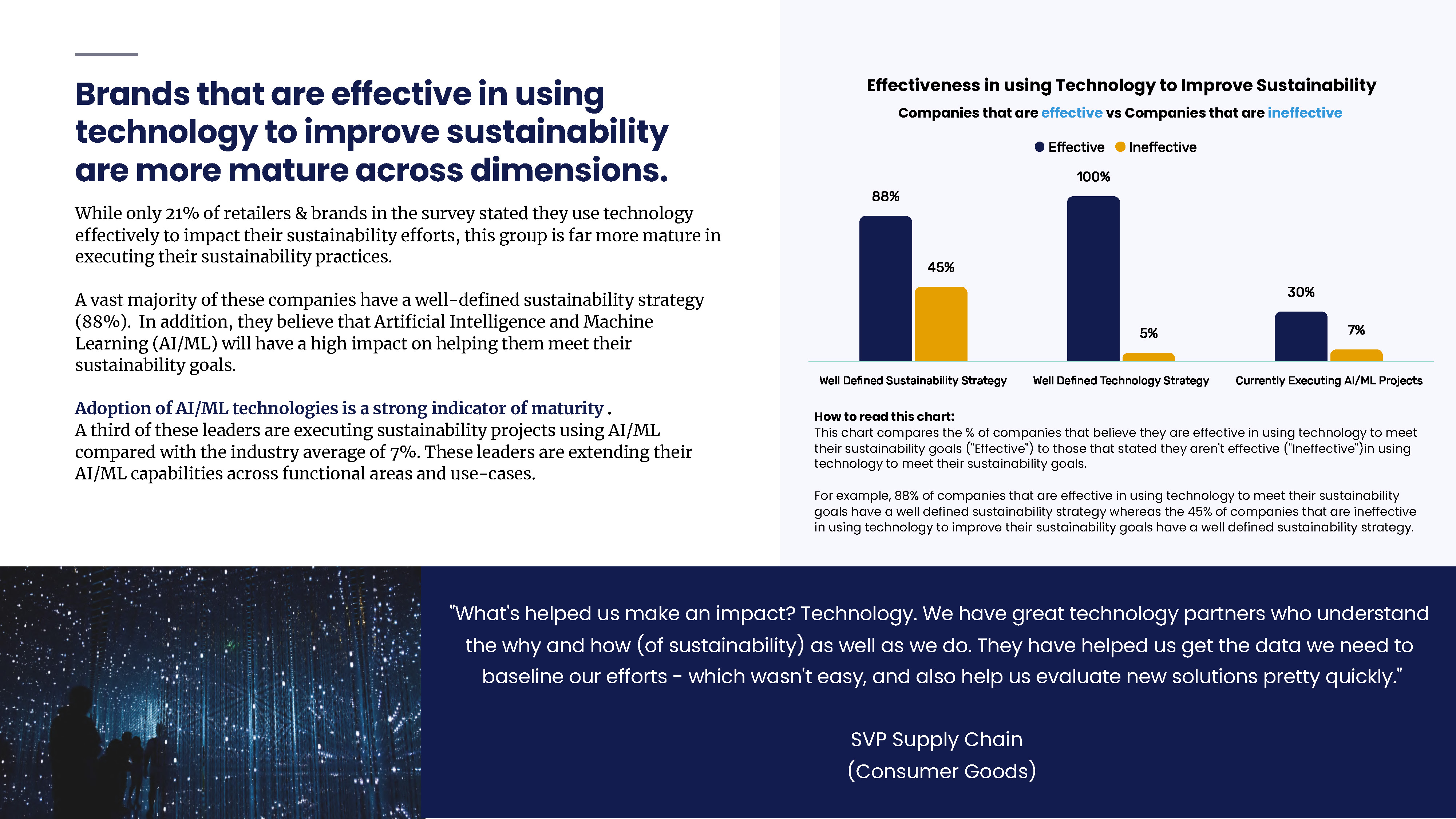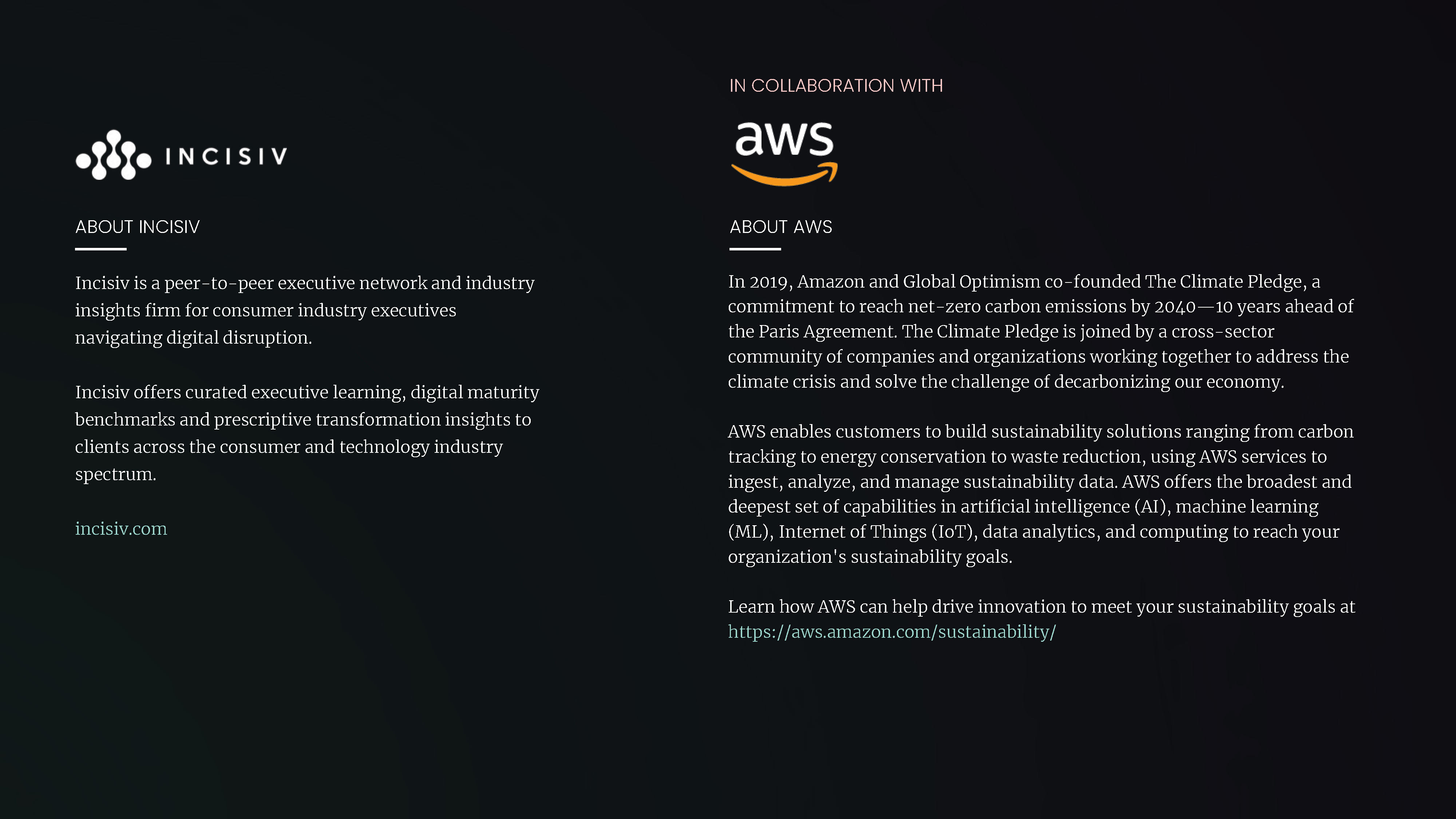State of the Industry: Retail & Consumer Goods
Driving Sustainability Using Analytics and Technology
Q3, 2022
Retail and consumer goods companies firmly believe that technology is essential to meeting their sustainability goals, but they haven't used technology strategically to drive toward those goals. Incisiv’s survey of 250+ retail and consumer goods businesses unveils that 73% of companies can't meet their sustainability goals without using technology, only 21% claim they effectively use it. To make matters worse, only 24% of companies have a technology roadmap that strategically addresses this challenge. There is a need to build and get a consensus on the long-term sustainability strategy and prioritize where to focus the efforts.
This report presents key findings and analysis where we assessed the role that technology and advanced analytics play in driving sustainability initiatives across the retail and consumer goods industry ecosystem.
FOUR KEY B2C COMMERCE IMPERATIVES
 Incisiv
Incisiv
Here’s a preview of the report. The full report is available for free download via the form below.






























As consumers continue to reshape their expectations,
enterprises must contend with a uniquely challenging landscape.
The consumer technology landscape is forever changing.
From Pinterest to TikTok, WeChat to Instagram, new experiences can rapidly gain consumer adoption and relevance.

From augmented reality to voice, smartwatches to chatbots, consumers are constantly embracing new interaction paradigms.
Commoditized convenience is eroding loyalty and margin.
Consumers expect convenience. If you can't deliver it, they'll go elsewhere - e.g. next day shipping becoming the new standard.
Walmart will reportedly lose USD 1 billion on eCommerce revenue of USD 21 billion this year as it faces challenges in its bid to complete against Amazon – from trouble integrating its DNVB acquisitions to impact on margin from its next-day delivery operations.
Consumers value experiences that are curated to fit their lives better.
They want to engage, be served, and transact at their time, their pace, their place. They have little patience, infinite choice and the freedom to swipe left at the slightest hint of friction.





